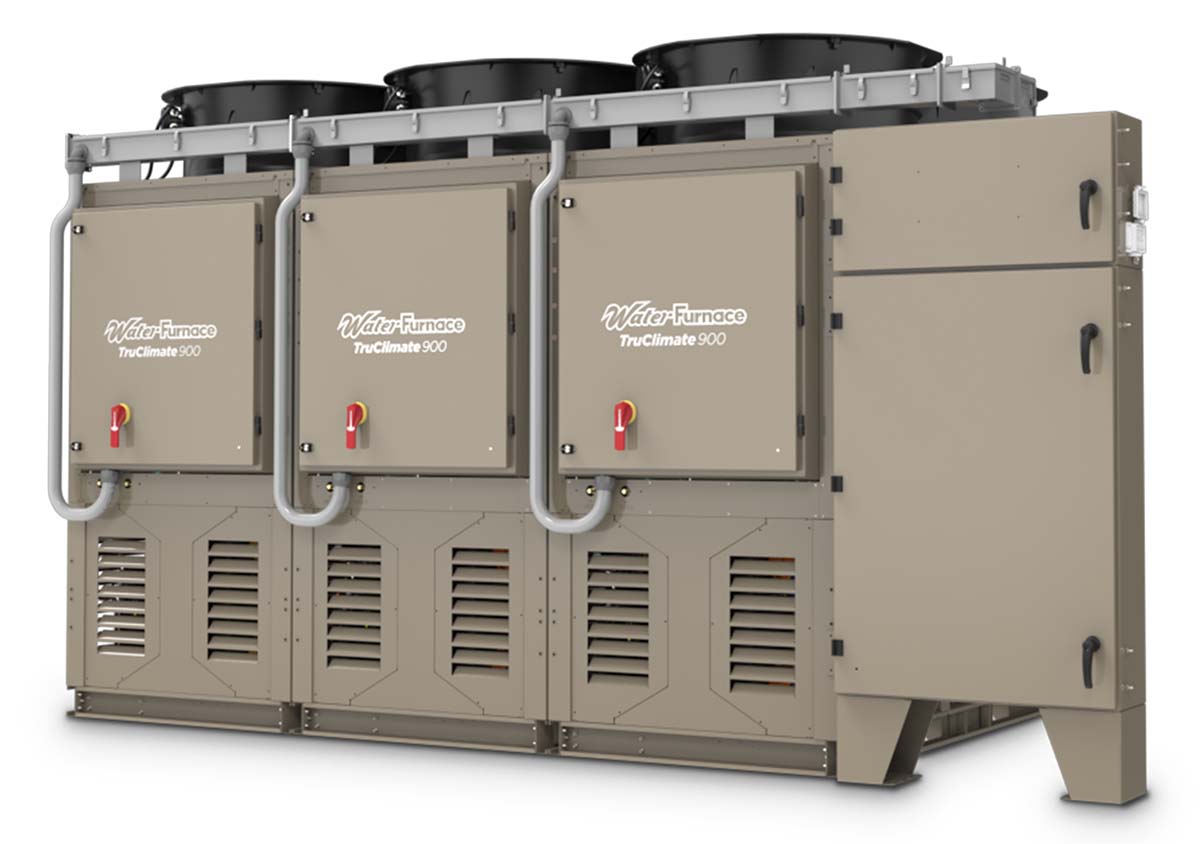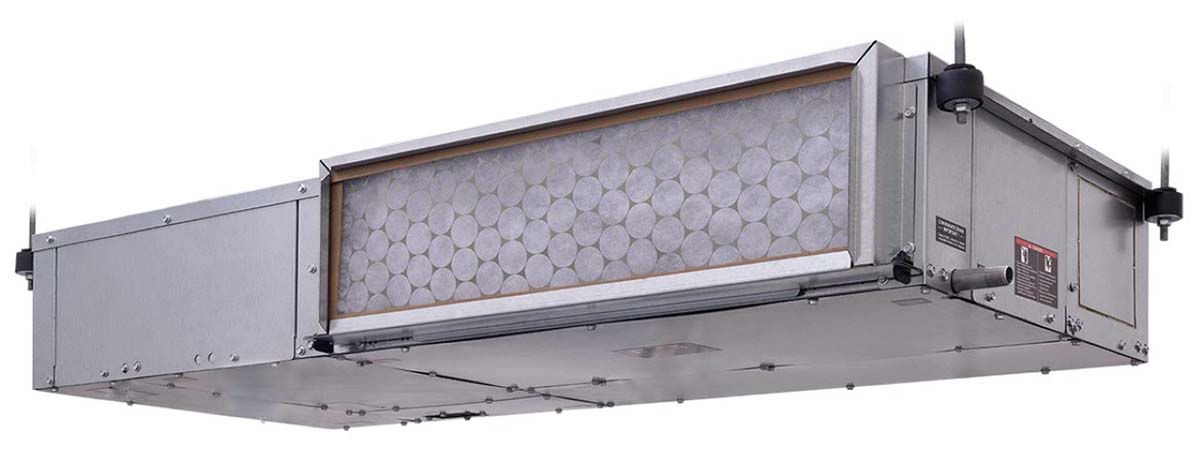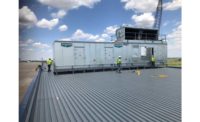engineer
20/10 Engineering Group
Enhanced tax incentives, environmental and decarbonization goals, and a critical mass of technology and know-how have converged to boost the geothermal market in cities across the country.
Companies involved in geothermal projects say they’re seeing greater interest in geothermal from businesses, the owners of multifamily buildings, and institutions like schools, governments, and museums. The Chicago, Illinois, area, manufacturers and local geothermal contractors say, is one of the booming U.S. markets for geothermal, despite the challenges of digging geothermal wells in high-density urban environments.
“The market here is actually pretty extraordinary,” said Scott Adelsbach, the owner of Chicagoland Geothermal, a contracting company that works exclusively on geothermal projects.
Adelsbach is a former builder of specialty homes who moved full-time into geothermal in 2008, after the housing market crashed. He’s invented a modular drilling rig, the Riginabox, that allows contractors to drill into concrete slabs and basements, within a building’s footprint, in built-out urban areas. Adelsbach holds a patent for the technology.
There are only a handful of contractors in the Chicago area that do geothermal, Adelsbach said, so the demand keeps them hustling.
“We are so busy, sometimes I can’t answer the phone, honestly,” he said.
“There hasn’t been a better time to pursue geothermal,” said Keith Christian, an engineer at the 20/10 Engineering Group.
Christian said that 20/10 Engineering did its first geothermal project in 2009 and, since then, has either completed or started about 70 geothermal projects in the Chicago area. Close to two-thirds, he said, are system-replacement projects, and the others are new construction. Around 90% of 20/10’s geothermal work is in schools, he said.
Tax Incentives
In addition to the energy savings that, over time, can reduce a geothermal system’s overall costs, recently enhanced federal tax incentives, geothermal experts said, have made commercial geothermal more affordable. Even tax-exempt entities, such as local governments, school districts, and nonprofits such as charities and foundations, can take advantage of certain incentives through a mechanism the Internal Revenue Service calls “elective pay,” also called “direct pay.”
“This makes geothermal extremely appealing to both retrofit and new builds, and we see a mix of both in most markets,” said Tim Litton, director of marketing communications at WaterFurnace, which manufactures geothermal equipment.
“We are now seeing some projects be able to pursue geothermal when they would otherwise not be able to,” said Christian.
The nonprofit Geothermal Exchange Organization (GEO), a trade organization based in Springfield, Illinois, offers resources to help people at organizations looking to go geothermal understand available incentives.
“We’ll certainly help them sketch it out and run through the law,” said Ryan Dougherty, the organization’s president, adding that GEO recommends consulting a tax professional as well.
Dougherty estimated that, in some places, combining federal, local, and utility incentives could cover up to 65% of the upfront cost of a geothermal installation.
“You’re talking about a really, really big portion of the project cost that is defrayed,” Dougherty said.
In addition, Dougherty said, many organizations and businesses have identified geothermal heating and cooling as a way to move toward their ESG (environmental, social, and governance) goals. The city of Chicago itself, in its 2022 Climate Action Plan, is aiming to reduce carbon emissions by 62% by 2040.
Equipment Lineups

TRUCLIMATE: The WaterFurnace TruClimate 900 variable-speed heat pump chiller is often used in commercial and institutional geothermal projects. Models of up to 140 tons are available. (Courtesy of WaterFurnace)
WaterFurnace makes a variety of equipment for the commercial and institutional geothermal market in the Chicago area, from its Versatac water-to-air heat pumps, with a capacity of up to 30 tons, to the TruClimate line of modular heat-pump chillers, which provide both hot and chilled water. TruClimate chillers have capacities ranging from 1.5 tons to 40 tons, and can be put together to provide up to 1,400 tons, Litton said. They offer simultaneous heating and cooling and, in banks of units, can be serviced individually, without taking the whole system down.
“All our product lines offer variable-speed options, smart communicating controls, remote-monitoring options, and integration into building automation systems,” Litton said.
The Climate Control Group (CCG), whose geothermal manufacturing companies include ClimateMaster, ClimaCool, and ClimaCraft, also makes a variety of equipment for use in commercial and institutional geothermal projects.

SLIM DESIGN: A ClimateMaster Tranquility Low Profile (TRL) water-to-air heat pump, designed for commercial and multifamily buildings. The units have a 9-inch cabinet height and can be installed in ceiling spaces with as little as a foot of vertical space. (Courtesy of Climate Control Group)
“All of the company’s brands are highly configurable to meet building design specifications,” said Joe Parsons, senior marketing and sustainability manager at the Climate Control Group.
The ClimaCool modular heat-pump chiller, Parsons said, is a good fit for system replacements in buildings where mechanical room access is limited. ClimateCraft, he added, offers built-to-order air handlers that are made to be transported into confined areas and reassembled.
Many of the company’s recent Chicago-area projects are at schools, Parsons said, that are taking advantage of the IRS elective pay clause.
“The average middle school project requires 45 to 50 ground-source heat pumps, compared to a public library, which may require between 10 and 15 units,” Parsons said.
Manufacturer Enertech Global is just breaking into the Chicago-area market. The company recently supplied the heat pumps for retrofit projects at two 16-unit apartment buildings, said Brian Pitcher, an Enertech territory manager.
Each building required a number of 60- to 70-foot wells, all within the building’s footprint, Pitcher said. The closed-loop systems called for one heat pump for each apartment, he said; most of the units were 2 tons of capacity, and some were 3 tons.
“The builder, he’s really sold on geothermal, so these projects came designed for us,” Pitcher said.
More Chicagoland Projects
The 20/10 Engineering Group has several ongoing projects, including at Cass Junior High School in Darien, Illinois, where the entire HVAC system is being replaced.
The school is about 79,000 square feet and has a closed-loop wellfield — dug earlier this year — of 40 wells of about 500 feet deep each, Christian said. The project is scheduled to be completed before the next school year starts, and 20/10 Engineering is also involved in a similar project at Concord Elementary School in the same community.
Christian said he typically specifies ClimateMaster heat pumps but has also done projects with WaterFurnace, Bosch, and Trane products, as well as with other brands.
Chicagoland Geothermal is currently involved in a project at what will be a car dealership in St. Charles, Illinois — McGrath Kia. When complete, the two-story building of almost 60,000 square feet, Adelsbach said, will have a hybrid water-to-water and water-to-air system with a closed ground loop of 96 wells of about 65 feet deep each. The wells stop at about 65 feet, Adelsbach said, because the city won’t allow drilling into the bedrock.
The water-to-water part of the system, Adelsbach said, is for radiant floor heating on the first floor; the other part of the system will utilize forced air. The project is being outfitted with Samsung and WaterFurnace equipment, including two 12-ton WaterFurnace units for the water-to-water system, he said.
Chicagoland Geothermal recently completed a similar hybrid project next door, in which a former convention center building that was part of a defunct resort property was remodeled as McGrath Honda. That building is reporting realizing savings of $8,000 a month in heating and cooling energy costs compared to other dealerships in the company that have conventional HVAC systems, Adelsbach said.
“I’m a big fan of geothermal,” Adelsbach said. “It’s an amazing savings of energy as well as being, definitely, more earth-friendly than a conventional system.”






Report Abusive Comment